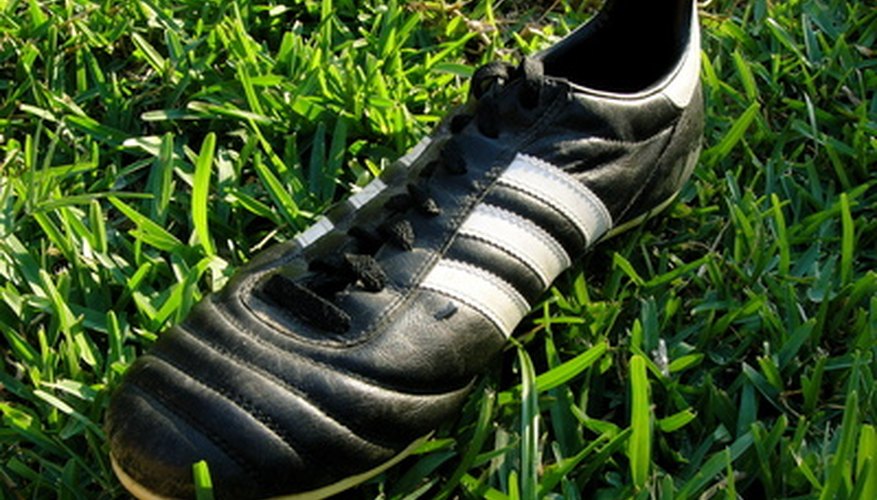Quality leather soccer shoes are a “must have” for many soccer players, especially those playing at high levels of competition. Good shoes will provide maximum comfort and fit as the leather stretches and forms to the shape of an athlete’s foot. This can improve a player’s feel for the ball. Among leather materials used for manufacturing soccer shoes, kangaroo leather is considered to be the softest and most flexible, and also tend to be the most expensive. But kangaroo leather is not known for its durability, so properly caring for your shoes will be necessary to ensure your investment provides long-term benefits.
- Quality leather soccer shoes are a “must have” for many soccer players, especially those playing at high levels of competition.
- But kangaroo leather is not known for its durability, so properly caring for your shoes will be necessary to ensure your investment provides long-term benefits.
Coat your new soccer shoes with a light layer of leather oil when you take them home from the store. This will help replenish the natural leather oils that were lost during the manufacturing process, and make the leather softer and more water repellent.
Clean your shoes after a practice or a game to remove excess dirt, grass stains and any chemicals that have rubbed off from the pitch. Use warm water and a cloth or toothbrush. Don’t dip or soak your shoes in water--dip your cloth in water and rub it on the shoes.
Dry your shoes if they are soaked after a rainy game. Wipe excess water off the outside of your shoes with a paper towel and stuff the shoes with newspaper to absorb the water and preserve the shape of the shoe. Leave the newspaper in the shoe for about 20 minutes, then replace the wet newspaper with dry stuff.
- Clean your shoes after a practice or a game to remove excess dirt, grass stains and any chemicals that have rubbed off from the pitch.
- Wipe excess water off the outside of your shoes with a paper towel and stuff the shoes with newspaper to absorb the water and preserve the shape of the shoe.
Store your shoes in a breathable bag where they may dry naturally. Sealed bags will preserve moisture, which can distort shoe shape and damage the leather.
Apply leather conditioners or oils to your shoes periodically to keep the leather soft and supple; once or twice a month should suffice. Rub small amounts of conditioner onto the shoes with a cloth, then let the shoes sit for an hour. Shoes that are stored during the off season should be removed from storage once every two months for conditioning, or they will dry out and the leather may crack.
TIP
Never use chemical cleaning agents on your shoes. Chemicals will slowly eat away at the leather. Never use a heater or prolonged exposure to direct sunlight to dry your shoes; this will result in cracks in the leather followed by a quick deterioration in the shoe. Don’t wear you cleats on hard surfaces such as pavement as these surfaces will wear down your cleats and reduce your traction on the field.
WARNING
The use of kangaroo leather to manufacture soccer shoes has been raised as an ethical issue by animal rights groups and activists in some parts of the United States. In California the Supreme Court banned the sale of adidas kangaroo leather soccer shoes in 1997. Animal rights activists argue that hunters often kill endangered kangaroo species, and that hunting methods sometimes subject animals to cruel deaths. Manufacturers of the shoes and the Australian government point to rising populations of the animal throughout Australia and argue that hunting them within regulations is sound wildlife management.
